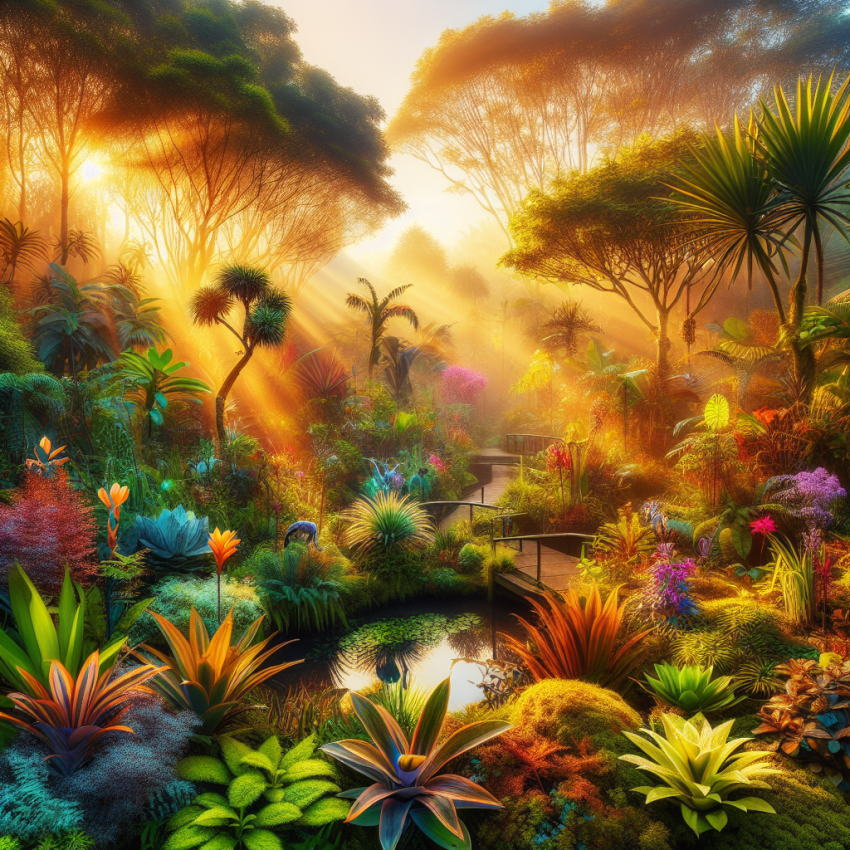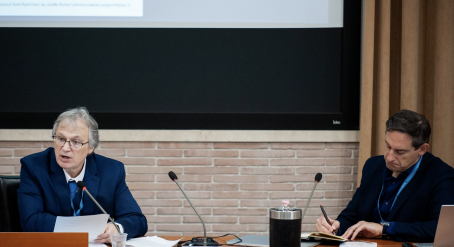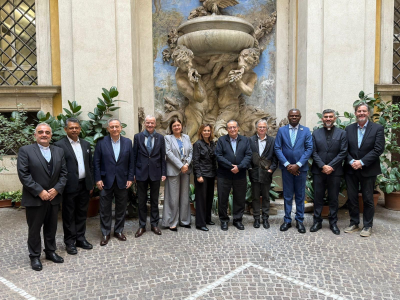
From safeguarding creation to integral ecology: Catholic thought put to the test by Philippe Descola's anthropology
By Dr. François Mabille
General Secretary of the International Federation of Catholic Universities (IFCU)
Among contemporary anthropologists, Philippe Descola occupies a singular place. A student of Claude Lévi-Strauss and professor at the Collège de France, he has profoundly renewed the social sciences by tackling one of the pillars of Western modernity: the separation between nature and culture. His work - based on his prolonged experience with the Achuar of Amazonia, and then on an ambitious comparison of human cosmologies - established a central idea: humans have not cut up the world in the same way everywhere. The opposition that has structured the modern West since the XVIIᵉ century - that of objective nature and autonomous humanity - is neither universal nor necessary.
In Beyond Nature and Culture, Descola proposes a typology of "ontologies" - naturalism, animism, totemism, analogism - that describes the major ways in which human societies compose a world. Western naturalism is only one regime among many: an intellectual device that produces the idea of nature as exteriority, of individuals as autonomous units, and of a humanity defined essentially by rupture rather than relationship. This reading grid not only provides anthropological tools; it opens up a theoretical and spiritual space for thinking differently about our place in the cosmos. By revealing the contingency of naturalism, Descola once again makes possible a vision of the world in which relationships take precedence over objectification, in which beings are defined by the links they forge, and in which matter itself is the bearer of meaning.
In other words, it offers religious traditions - and the Catholic tradition in particular - the chance to re-read their heritages in a fresh light, fully embracing what we might call an ontology of relationship.
This is the context for contemporary Catholic thinking on ecology. Far from being a mere moral or environmental extension, it goes to the very heart of our understanding of creation. The notion of integral ecology, promoted by Laudato Si' and then deepened under the pontificate of Leo XIV, echoes many aspects of Descola's analysis: rejection of the nature/culture dualism, attention to the relational fabric of living things, recognition of fragility as a constitutive dimension of our existence.
Far from any superficial recuperation, mobilizing Descola helps to give solid intellectual legitimacy to the theological effort underway: demonstrate that the Catholic vision of creation is not a reaction to modernity, but a structured response to its unthinking. To recall Descola's contribution is to affirm the relevance of Catholic thought to contemporary debate. In contrast, his anthropology sheds light on what the Church is proposing today: not a spirituality of nature, nor a green technocracy, but a relational anthropology, deeply rooted in Christian analogism, where every created being is a sign, a mediation and a call to responsibility.
This is the basis for the analysis proposed in the following pages, whose sole ambition is to encourage discussion between different but potentially fruitful intellectual approaches: a cross-reading of the evolution of Catholic thinking on creation and Philippe Descola's anthropological grid, to show how the Church today contributes to a recomposition of the visible that is faithful to its tradition and relevant to the contemporary world.
The beginnings of a Christian ecological conscience
Ecological awareness in the Christian world does not date back to the Laudato Si' encyclical. As early as the 1980s-1990s, a number of minorities active within European Christianity were beginning to promote a renewed theology of creation.
The Basel Ecumenical Assembly (1989) was one of these founding moments: the European churches affirmed that justice, peace and the safeguarding of creation were three inseparable dimensions of Christian faith and mission. This triptych, which would later inspire the concept of "integral human development", already linked ecological conversion to social and spiritual conversion.
In the years that followed, movements such as Pax Christi played an essential role in spreading this sensitivity. Far from reducing ecology to an environmental discourse, they rooted it in a Christian anthropology of connection, insisting on the dignity of all life, non-violence and cosmic solidarity. The theme of the "suffering of creation" then made its appearance in pontifical messages for the World Day of Peace, particularly under John Paul II(Peace with God, peace with all creation, 1990) and Benedict XVI [1](If you want to build peace, protect creation, 2010). These texts invited us to reread human domination over nature in the light of Genesis, not as a mandate for exploitation, but as a vocation to responsibility.
This evolution was already paving the way for an ontological mutation: the transition from a dualistic conception - man and nature - to a relational vision of creation. It is this shift that Philippe Descola, in his work, describes as a move away from modern naturalism.
Laudato Si' or the analogist rehabilitation of the world
In 2015, with the encyclical Laudato Si', Pope Francis decisively placed Catholic reflection in a perspective that can, in the light of Descola, be described as analogist. The encyclical not only reiterates the need for ecological conversion, but also proposes an ontology of connection, based on the idea that "everything is connected". Every being, every creature, every ecosystem is the bearer of its own dignity and participates in a harmony willed by God.
According to Descola's grid, analogism is defined by a discontinuous but connected world, where the differences between beings are not abolished but integrated into a network of correspondences. Laudato Si' is precisely such a regime: creation is not a homogeneous whole, but a differentiated set of entities linked together by divine love.
The world is described as a web of sacramental relationships, where the visible constantly refers to the invisible. The cosmos is no longer a nature to be mastered, but a communion to be contemplated and served.
Francis reconciles science and faith, reason and spirituality. He assumes the naturalist heritage of the West (confidence in research, dialogue with scientific ecology) while going beyond it with an anthropology of relationship and responsibility.
Naturalism is retained as a method, but subverted as a cosmology: nature ceases to be an object and becomes a sign once again. In Descola's language, Laudato Si' marks the attempt at an analogist return to the very heart of the naturalistic world: a reintroduction of the symbolic, of correspondence and meaning into a universe hitherto perceived as pure materiality.
The world as a web of sacramental relationships
The expression refers to a vision of the world in which every created being exists through and for relationships. In the perspective of Laudato Si', creation is not a collection of objects, but a network of living relationships, each of which can become a mediation of the divine presence. The world is thus "sacramental": it makes the invisible visible, it manifests grace in matter. In anthropological terms, this intuition is in line with what Philippe Descola calls analogist ontology: a cosmos in which discontinuous realities - God, man, creatures - are linked by correspondences. Christian theology offers a singular version of this: these correspondences are not merely symbolic. Baptismal water, Eucharistic bread and cosmic fellowship do not sacralize nature; rather, they recognize the Creator's ongoing action in the very link between visible and invisible, matter and spirit.
Leo XIV: from integral ecology to Christocentric ecology
The election of Pope Leo XIV extended this line, while giving it a more explicit theological emphasis. His recent pronouncements - notably in his message for the World Day of Prayer for Creation 2025, and in his speeches on climate change - continue Francis' legacy, while adding a clearer Christological dimension.
Following in Francis' footsteps, Leo XIV affirms that "nature must not be reduced to a commodity", and calls for an inner conversion based on sobriety and environmental justice. His concrete initiatives, such as the creation of theBorgo "Laudato Si" ecological education center [2] or theor the establishment of a liturgy for the care of creation, reflect this desire to embody ecological conversion in the daily life of the Church. But he also made a major doctrinal clarification regarding the possible drifts of an excessive "ecospiritual" discourse, denouncing "a new Babel temptation", that of "wanting to save creation without going through the Savior".
This critique is not a conservative retreat: it is part of a theological purification of ecological discourse. By reminding us that creation is not divine but sacramental, Leo XIV redefines the right balance between recognizing the world as a sign of God and rejecting any divinization of the cosmos. Where Francis had opened up the field of cosmic brotherhood, Leo emphasized its boundary: the world leads to God, not replaces him. In other words, Leo XIV assumes the analogism of Francis, but rejects the animist risk.
Creatures are signs of the divine presence, not divine subjects.
Their beauty and fragility call for the worship of the Creator, not the veneration of creation itself. Thus, his critique of "ecological idolatry" does not reject integral ecology, but re-establishes its theological hierarchy: safeguarding creation is a matter of redemption, not of natural or self-produced salvation.
Descola's contribution: a key to anthropological reading
Descola's typology of ontologies - animism, naturalism, totemism, analogism - helps us to understand the Catholic position in the contemporary ecological debate. Christian theology of creation is basically a theological analogism: God is both transcendent and immanent, and creation is a series of mediations between these two poles. The world thus becomes a space of ascending mediations, where grace circulates from the visible to the invisible. Descola's "analogism" finds its theological counterpart here: a differentiated but connected cosmos, ordered not by impersonal forces, but by the participation of the created being in the divine Being. This analogist model explains Christianity's ability to enter into dialogue with science (its naturalistic heritage) and to recognize cosmic brotherhood (its animistic overtones), while retaining the verticality of transcendence. Descola offers a fruitful interpretive grid for overcoming the polarizations between technological rationalism and diffuse "ecospirituality".
Towards a theology of relationship
The challenge of the time, which Francis and then Leo XIV each faced in their own way, was to refound the relationship between God, man and the world. Christianity, without confusing itself with an indigenous cosmology, rediscovers in this anthropological reflection the resources of a way of thinking about relationships that modern humanism had partially forgotten. Through the notion of integral ecology, the Catholic Church reinscribes its mission in an anthropology of the inhabited world, where moral responsibility becomes the contemporary form of holiness. This shift opens up a median path that is neither naturalistic (the world as object), nor animistic (the world as divine subject), but analogistic (the world as sign and relationship).
Conclusion: the Catholic recomposition of the visible
The evolution of Catholic thinking on ecology, from Basel to Leo XIV, reveals a profound transformation: the Church has moved from an environmental morality to an ontology of relationship. This mutation, which Descola has shed light on, reflects a desire to inhabit the world in a different way - no longer as an owner, but as a "steward" of mystery. In this respect, Catholicism offers a credible alternative to naturalistic modernity: a world where the visible refers to the spiritual, where scientific reason coexists with contemplation, and where ecology becomes a path to salvation. Francis laid the foundations for this, while Leo XIV ensured its theological coherence: one opened up the horizon of cosmic brotherhood, the other recalled its Christological source. In this way, contemporary Catholic thought takes theological paths towards what Descola calls the composition of worlds: a constant effort to weave together meaning, matter and relationship, in other words, to re-enchant the visible without idolizing it.














No comment
Log in to post comment. Log in.